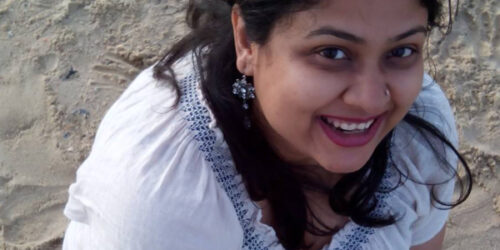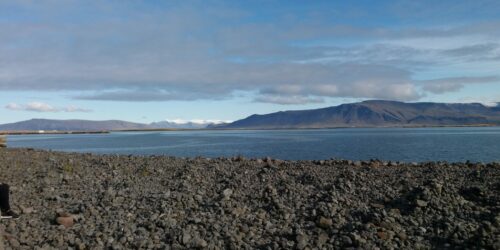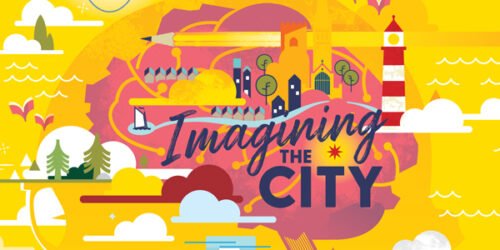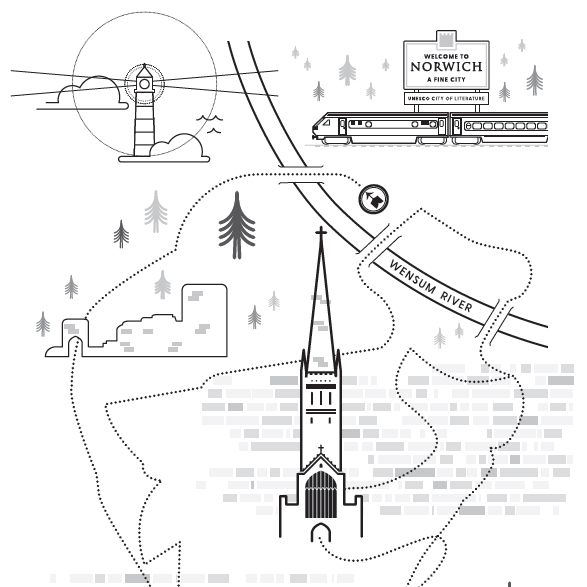
In February 2021, the National Centre for Writing welcomed five writers from other UNESCO cities of literature to Norwich for a month-long virtual residency: Liz Breslin from Dunedin, New Zealand; Lynn Buckle from Dublin, Ireland; Valur Gunnarsson from Reykjavík, Iceland; Marcin Wilk from Kraków, Poland; and Vahni Capildeo from Edinburgh, UK.
During this residency, non-fiction writer and poet Vahni Capildeo worked on a project called Lighthouse and Anchorage. The journal entries were inspired by the ports of Newhaven and Norwich, and the daily walk from Vahni’s house to the lighthouse while meditating on weather, lockdown life and writings by Julian of Norwich.
You have arrived at Norwich by train. You were in too much of a hurry to eat before setting off. Avoiding the chain shops and positively afraid of the pizza places that mushroom around railway stations, you pick up a hot roll or a piece of fruit at the local general store. As you exit the building, the sky seems bigger and more silvery than you ever knew it. Memories of whatever you saw during the train journey – perhaps the pigs of Thetford billowing on the horizon – evaporate faster than raindrops on tarmac at noon. Bearing right through the car park, you traverse the River Wensum as you cross the lanes of traffic. You decide not to continue straight down Prince of Wales Road. You head further right, along the river. At any time of year it is dark blue. Even when the weeping willows are not whitish green, they are greeny and yellowy, or greenish silver, earning the old-fashioned name of ‘sallows’. The river is on your right.
Looking across the water, you see signs for small hotels on the terraced houses, taller than they are wide, with greyish-yellow or reddish facades and pointed roofs. You wonder what it would be like to stay near the river, perhaps in an attic room with no ornament except a shiny red vase. Perhaps you did that in another, itchy life. Now you keep going. The rhythm of light which plays between the willows and the water mesmerizes you as you fall into an undemanding pace that is part of the same modernity as the rushing sound of cars; part of the same tradition of journeying as the people who took Pull’s Ferry in the fifteenth century.
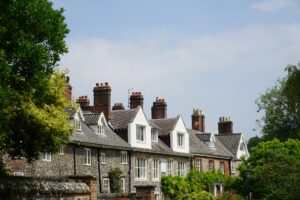
You could cut short your time by the water. You could take a left at Pull’s Ferry, and head towards the heart of flint carved into flower and leaf: the Cathedral grounds. You don’t. Perversely, you continue along the Wensum, knowing that the life of the Cathedral is happening just over there, but you choose not to join it, not yet. As long as you don’t see it in the present, you see it as if from the point of view of eternity: all of its life, pre- and post-pandemic, seems to be happening simultaneously – the skreek of falcons on the tower, birders repositioning their waterproofed telescopes, the crumbling of cheese scones, the snapping and idling of tourists, the monochrome of a bustling ghost in the north aisle, the carved bosses making faces with impunity in the cloisters, Christ harrowing hell in an icon that shows Him as having the athleticism of a skateboarder, the wartime martyrdom of Edith Cavell translated into pictorial stations, a tiny painted egg-like stone hidden behind a pillar by local artists who want you to find it and pass it on, a solitary man dandling a black cat on his lap in the Physic Garden, poets meeting under pink magnolia trees, pensioners on benches doing their last rounds of sunny nothing. You enjoy the sense of busyness; you delay your encounter with it. The path bears left. You are more aware of green space opening up on that side than the dark blue flowing away on the other.
Turning left and proceeding along Bishopgate, eventually you are drawn to the Great Hospital on the opposite side of the road. A thirteenth-century site for the sick, the poor, and the religious, over time it has contained many wonders and continues to serve community needs. The thought of a swan pit flaps for your attention, but you are trying a little harder to get to the Cathedral, no longer distracted by blue or green. The flints set into walls distract you instead. They are cool. They are strokable. Grey flints and white flints, rough flints and knapped flints, shiny and chewy. Are you going anywhere or is your destination simply any of these tactile walls?
You will make it into the Cathedral. Dame Julian will hold her stone book open. The rose window will throb. You will make it. Just not yet. Now you are lingering at its north-east corner, under a yew tree of vast dimensions. The yew tree embraces the path that suddenly appears little and bright. You stand there, feeling hugged.
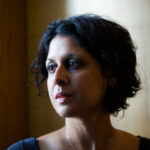
Vahni Capildeo is a writer based in Edinburgh. Their background in medieval studies, lexicography, translation theory and culture for development underpins their non-fiction and poetry. Capildeo is interested in collaborative and immersive experiments; Skin Can Hold (Carcanet, 2019) and Odyssey Calling (Sad Press, 2020) offer participatory texts for readers to re-work. Capildeo’s work has been recognized with awards including the Forward Prize (Best Collection) and the Cholmondeley Award. Their ongoing research on silence, and their concern with the ecopoetics of place, are reflected in their eighth book, Like a Tree, Walking (Carcanet, 2021) and their seventh pamphlet, The Dusty Angel (Oystercatcher, 2021).
This piece is taken from Imagining the City: a pamphlet of imaginary walks through Norwich by writers taking part in a virtual residency. Buy a free copy of the pamphlet (p&p applies) here →



